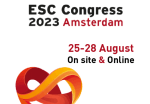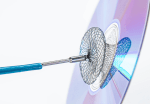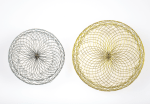Cardiogenic shock (CS) represents the main cause of death in patients hospitalized for acute myocardial infarction (AMI). Despite advances in its management, mortality continues to be high, between 40-50% within the first 30 days. In an attempt to improve survival, early extracorporeal life support (ECLS) is being increasingly used to stabilized hemodynamics in cases of...
ESC 2023 | STOPDAPT-3
Short Dual antiplatelet therapy (DAPT), one to three months, followed by P2Y12 inhibitor monotherapy has been shown to reduce bleeding events without increased cardiovascular events vs. standard DAPT, according to guidelines. However, the rate of major bleeding within the first month after procedure remains significant when using these strategies. The use of aspirin-free therapies (ASA)...
MACT Study: Monotherapy with P2Y12 Inhibitor Associated with Colchicine after Acute Coronary Syndrome
Dual antiplatelet therapy (DAPT) is the current standard for preventing thrombotic events in high-risk patients with coronary artery disease, as well as in patients with acute coronary syndrome (ACS) undergoing percutaneous coronary intervention (PCI). However, this approach increases the risk of bleeding. To reduce this risk, there have been studies that discontinued the use of...
Left Atrial Appendage Occlusion: Clinical Outcomes according to Device Implantation Depth
Continuous improvement of left atrial appendage occlusion (LAAO) devices has had a positive impact on the safety and efficacy of this technique. However, device related thrombus formation (DRT) is still a major concern because of the associated increased risk of thromboembolic events. Approaching this complication calls for more intense antithrombotic treatments, which in turn involves...
EASTBOURNE Registry: Use of Sirolimus-Coated Balloons in Coronary Artery Disease
The introduction of drug coated balloons (DCB) has become an innovative therapeutic alternative to current treatments. Paclitaxel-coated balloons (PCB) have been used to treat in-stent restenosis (ISR) and also approach CAD in native arteries. More recently, sirolimus-coated balloons (SCB) are being looked at as part of pilot studies and smaller registries with preliminary results. The...
Left Atrial Appendage Closure: As Effective in Men and Women?
Atrial fibrillation is the most prevalent arrhythmia and to prevent its potential complications, we should administer anticoagulants (OACs), either warfarin or the new direct oral anticoagulants (DOACs). Even though these drugs have been shown effective, they still involve the risk of bleeding, especially gastrointestinal bleeding, which in turn leads to numerous hospitalizations. Left atrial appendage occlusion...
bRight: Impact and Safety of the TriClip Device in a Real-World Cohort
The clinical importance of severe tricuspid regurgitation (TR) has been underestimated for many years now. However, studies and registries have shown that, when left untreated, this pathology significantly increases morbidity and mortality. Patients in need of treatment are often older individuals with higher surgical risk due to the prevalence of this condition. Contemporary data has...
Are There Sex Differences in pLVAD-Assisted High Risk PCI?
The proportion of patients undergoing high risk PCI (HRPCI) is on the rise. It includes patients with different clinical, anatomical and procedural characteristics, such as low ejection fraction, severe vascular disease, three vessel or left main disease, severe lesion calcification and the use of atherectomy. Mechanical circulatory support devices (MCS) during HRPCI, such as the...
STREAM-2: Reduced Dosage of Tenecteplase for Patients over 60 Years Old
Reduced dosage of tenecteplase in elderly patients undergoing a pharmaco-invasive strategy. Delays in achieving timely reperfusion in patients with acute coronary syndrome with ST elevation (STEACS), whether through fibrinolysis or primary percutaneous coronary intervention (PCI), are associated with increased mortality. European guidelines establish a target reperfusion time of 120 minutes after the first medical contact...
Secondary Prevention with P2Y12 Inhibitors: How Consolidated Is This Long Term Alternative vs. Aspirin?
Secondary prevention with P2Y12 inhibitors vs aspirin monotherapy in CAD patients Antiaggregation therapy plays a central role at long term to prevent new cardiovascular events in atherosclerosis patients. After repeat myocardial infarction (MI) or stroke, prognosis can vary considerably. Even though the current guidelines prefer aspirin as the first choice for secondary prevention over P2Y12...







